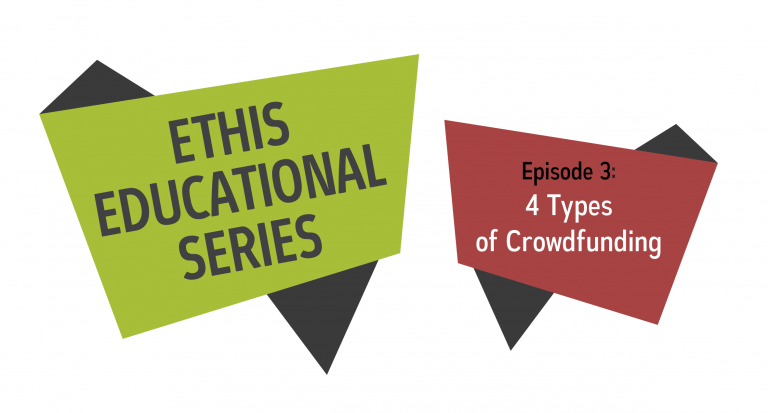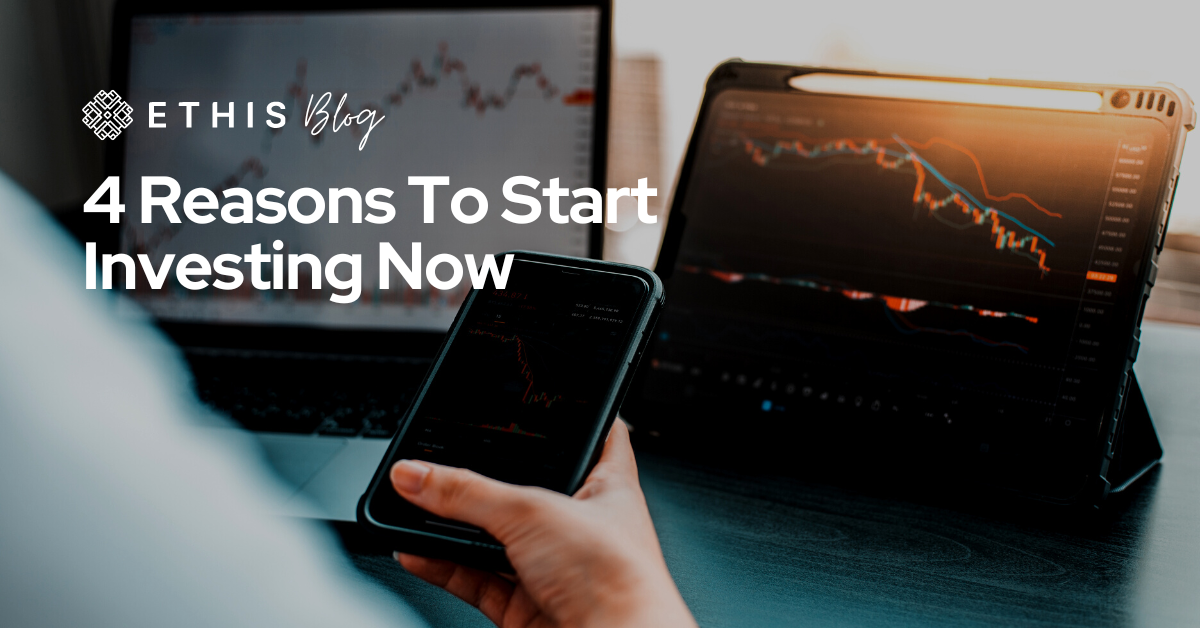
#EthisEduSeries Ep 3: The 4 Types of Crowdfunding
Transcript:
Assalaamualaikum w.b.t.
My name is Ahmad Sabree.
Today, we will be talking about the four models of crowdfunding and how they work, from A to Z. These are reward, equity, charity, and lending crowdfunding, also known as P-2-P crowdfunding.
We will talk about how it starts from the crowd, then to the project, and if there is any return or payout, how it comes back to YOU, the crowd?
1-Charity crowdfunding: An example of this type of crowdfunding is SkolaFund. SkolaFund provides free scholarships to students who need funding and are unable to get scholarships otherwise. When you invest in SkolaFund, you give your investment to the platform, which will then channel your investment to the students who need scholarships.
We often receive updates from students throughout their studies, which is always wonderful! Charity crowdfunding is mainly a three-step process. In brief, the flow starts from the crowd to the platform, and then to the project or the receiver of the charity.
In this particular model, there is no financial reward or payout but you get that great feeling of helping someone in need!
2-Reward-based crowdfunding: In reward-based crowdfunding, you will give something of cash but you will get back something in kind, meaning non-cash. An example of that is platforms like LaunchGood.com which offers reward-based crowdfunding as well as charity.
To clarify, let’s take the example of an artist who needs funding to make a movie, so they go to a platform that provides reward-based crowdfunding. They will put their project online and the crowd will support them through the platform. After collecting funds from the crowd, the platform will send it on to the artist. That young artist will then go on to produce their work and in return give different kinds of rewards to you, the crowd!
For example, they may put your name in the movie credits or send you a ‘Thank you’ t-shirt or mug or anything else that they have promised. This will be done after the project has been fully funded.
Thus, reward-based crowdfunding is a four step process: from the crowd to the platform to the project and, in the end, the project sends you the reward.
3-Equity crowdfunding: Equity crowdfunding gives you, as an investor, a share in the company that you have invested in.
For example, you want to invest in a project that is equity in nature, so you will search for an equity crowdfunding platform. One example is AtaPlus.com, an equity crowdfunding platform in Malaysia that have several equity projects available.



One example is a project by SkolaFund, the crowdfunding platform that I told you about before. That is a crowdfunding platform raising equity crowdfunding. It is very interesting.
You go to AtaPlus.com and notice that, “Hey, SkolaFund needs some equities, let me invest in them!”. So, you send your investment to the SkolaFund project.
Once the project is funded and running, you will receive a share in the equity or in the profits that come from the running of that platform. You will receive returns or dividends from your investment in that platform perhaps on a bi-annual or semi-annual basis.
However, there are certain qualifications that you need to have in order to invest in equity crowdfunding. It’s a little bit longer than other processes, but it’s a great alternative to the regular stock market or bond market. Plus, these investments are also Islamic and Shariah compliant.
4-P-2-P crowdfunding: The term lending crowdfunding is a bit heavy for most people, thus, is usually called P-2-P.
P-2-P stands for a peer-to-peer, meaning person to person. How it works is that you, the crowd, will go to a P-2-P platform, such as the Lending Club in America, or the Funding Society, Moolah Sense in Singapore. Basically, all you will do is send your money to the platform and invest in a specific project that is listed on that platform.
For example, someone wants a small loan for their small business. You, along with other people, will put in small pieces of funding and work to form the full loan. That loan will go to the company or the project and will be received via the platform. The fund goes from you to the platform, and then to the project.
After that, the project can operate and generate some income to pay back your money, which we call the capital plus interest. Therefore, the way that people are earning money through P-2-P lending is by giving their money as a loan, and getting back their loan plus interest.
Now you may be thinking, “How can we do P-2-P crowdfunding the Islamic way?”. Interest is prohibited in Islam and we cannot earn or charge interest.
Therefore, how can we do peer to peer crowdfunding in an Islamic way?
That’s a great question and we’re going to answer that question in the next video.
So, please make sure you come to our platform and check out our projects. Also, tune in next week when we talk about how peer to peer crowdfunding can be done in an Islamic way!
Please subscribe on our Youtube.
Please follow and like on our Facebook.
Check out our next episode here!
Thank you very much.
Assalamualaikum.






Top Posts
Islamic P2P Crowdfunding Explained
How to Earn Halal Money? The Money Mindset
Halal Investments for Singapore Muslims? It’s time for a shake-up in the Islamic Investments scene.
Smart investment for making Halal money
3 Reasons Why Property Crowdfunding is the Smart Investment for You